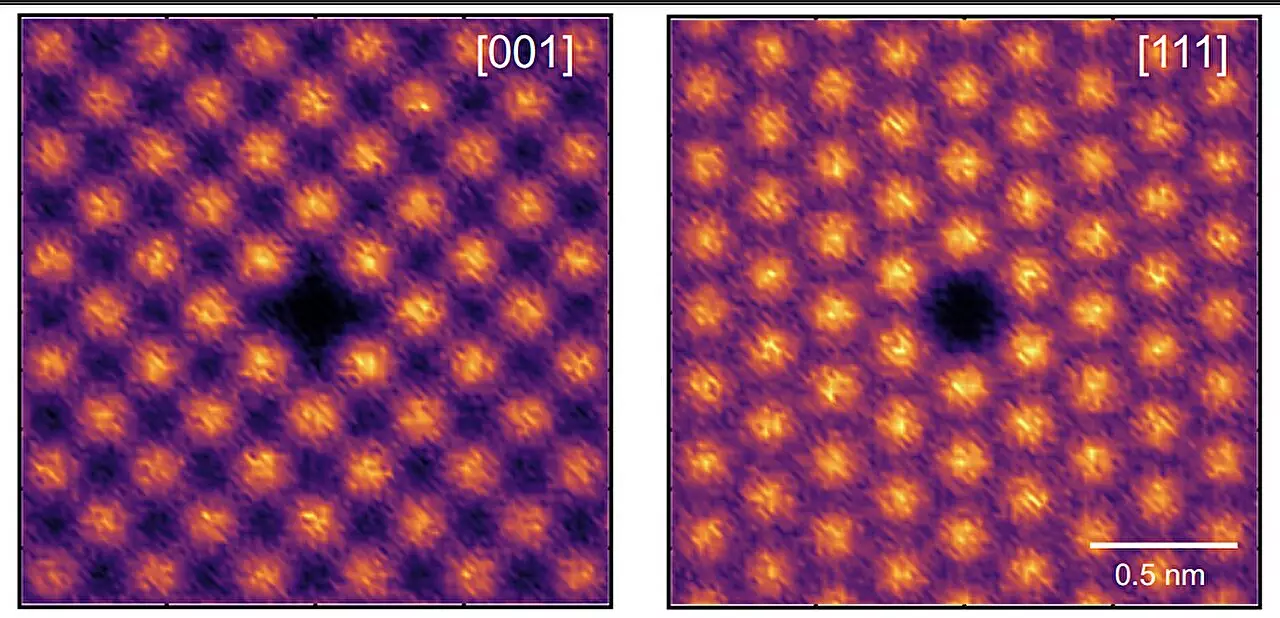Recent advancements in microscopy have unveiled a groundbreaking method that enables researchers to observe minute alterations in the atomic configuration of crystalline materials. This innovation is particularly pertinent for industries that rely on advanced materials, such as aerospace, electronics, and various manufacturing sectors. With the potential to dramatically elevate our understanding of the fundamental attributes of materials, this technique not only stands to enhance performance parameters but also paves the way for future innovations.
The study conducted by a team at the University of Sydney’s School of Aerospace, Mechanical, and Mechatronic Engineering is a pivotal contribution to materials science. By employing atom probe tomography (APT), researchers have introduced a novel approach to decode short-range order (SRO) within materials. The implications of this research extend well beyond theoretical frameworks; they promise to enrich the design of new, stronger alloys, next-gen semiconductors, and energy-efficient motors, all prerequisites for sustainable technological advancements.
The Science Behind SRO
SRO is a critical concept that essentially represents the unique arrangement of atoms within a crystalline structure. It is akin to understanding a “material genome” that dictates how different configurations influence the electronic, mechanical, and thermal properties of materials. Until this breakthrough, effectively measuring SRO remained a challenge due to its atomic scale—far too small for conventional microscopy techniques to capture. The University of Sydney’s findings promise to dismantle this barrier, unlocking previously inaccessible data that could redefine material engineering.
Professor Simon Ringer, an influential figure in this research, asserted that the primary motivation was to delve deeper into local atomic environments beyond mere structural analysis. The quest to determine whether atomic arrangements within a crystal are random or non-random has significant ramifications for material behavior. The capacity to quantify these arrangements enables researchers to tailor materials atom-by-atom, leading to uniquely engineered properties desired in high-performance applications.
High Entropy Alloys: The Future is Here
One of the focal points of this research is high entropy alloys (HEAs), which are becoming increasingly vital across various aggressive engineering domains. These materials have attracted worldwide attention due to their remarkable potential for high-temperature applications, particularly in sectors like aerospace and nuclear technology. Ringer highlights the vast research effort directed towards HEAs, driven by their promising attributes in environments that demand exceptional strength and durability.
Using sophisticated data science techniques, the research team meticulously analyzed a cobalt-chromium-nickel high entropy alloy, studying how different heat treatments affect SRO. This experimental focus illustrates the importance of processing conditions and their direct correlation to material properties. The findings act as a foundation for future explorations into SRO’s control over critical material characteristics, setting a trajectory for advanced material design.
Transformative Impacts on Material Design
The ability to accurately measure and comprehend SRO marks a monumental shift in materials engineering paradigms. Dr. Mengwei He, a postdoctoral fellow involved in the study, encapsulated this sentiment by stating how such insights provide “a new set of eyes” to perceive the microscopic shifts that can lead to significant enhancements in material capabilities. By promoting a more intricate understanding of atomic architecture, researchers can refine the current processes and methodologies for material design.
Furthermore, the implications of these findings transcend mere measurement. They facilitate enhanced computational models and simulations that can forecast material behavior much more accurately. Dr. Andrew Breen emphasized the pioneering nature of their experimental methods, which not only validate the feasibility of SRO measurements in multicomponent alloys but also delineate the parameters within which these measurements hold true.
Community Implications and the Road Ahead
The research heralds promising advancements not just for materials science but for the broader engineering community. As these methodologies gain traction, they could catalyze a new wave of innovation that leads to the development of materials that are safer, lighter, and more efficient. The comprehensive understanding of atomic interactions lays the groundwork for products that can be sustainably engineered, thereby addressing modern consumer demands while maintaining high levels of functionality.
As industries grapple with the need for innovative solutions in energy consumption and materials efficiency, the ramifications of this research will be crucial. The newfound capability to pinpoint and manipulate atomic arrangements may very well be the key to unlocking the next generation of materials, driving us toward a future characterized by robust and sustainable technological advancements. The stage is set for what could evolve into a renaissance in material science, one that aligns with the ever-growing need for innovation in a rapidly-changing world.


Leave a Reply